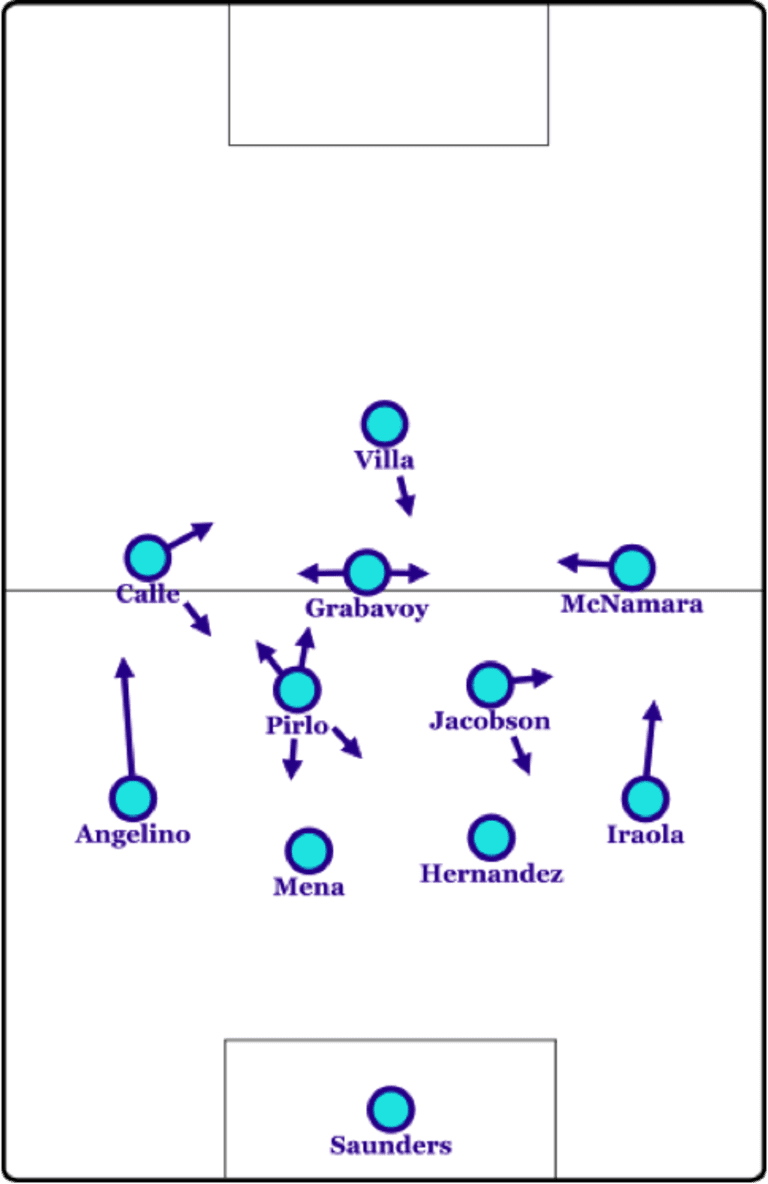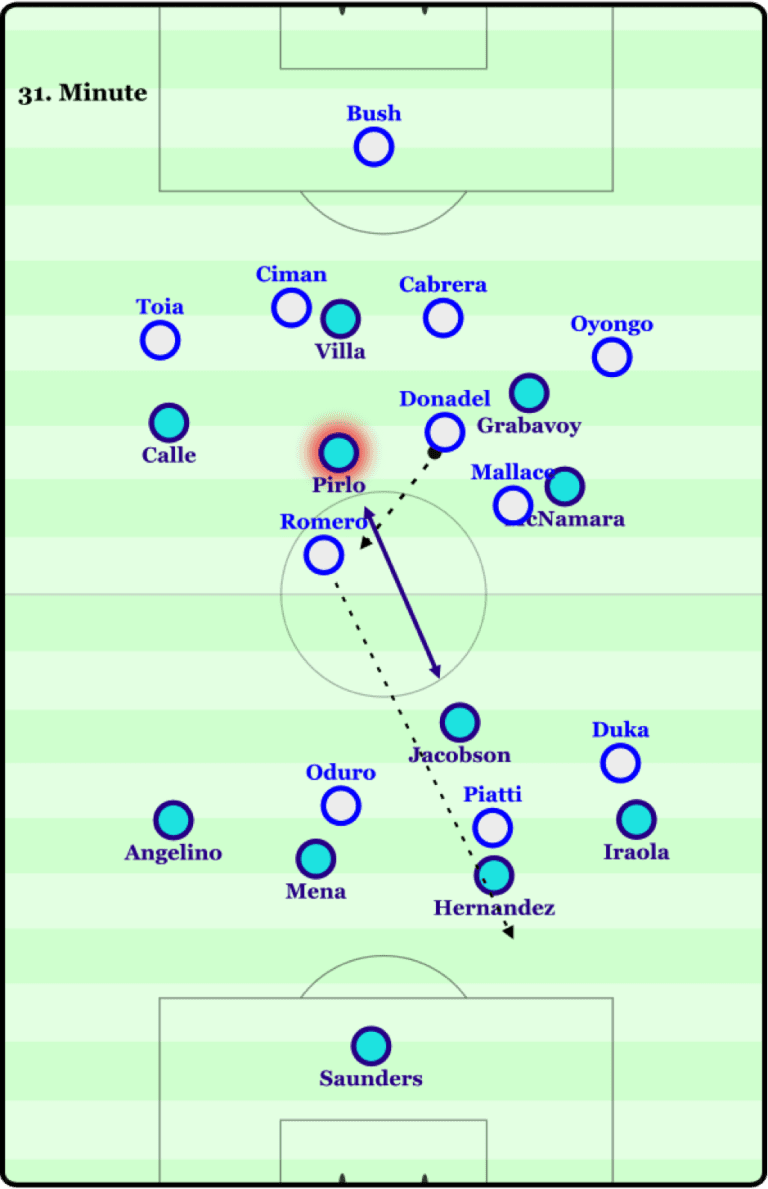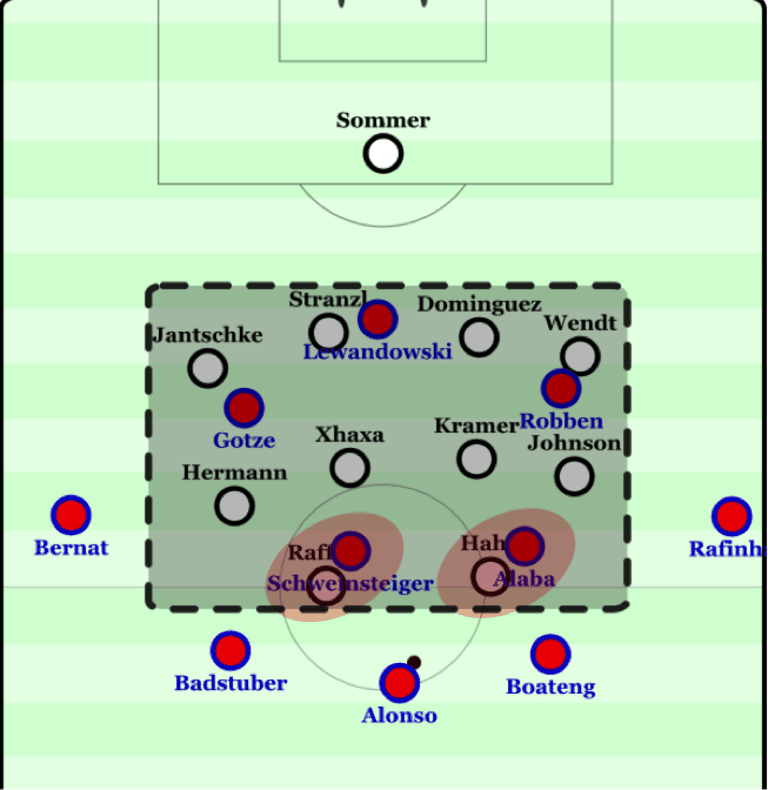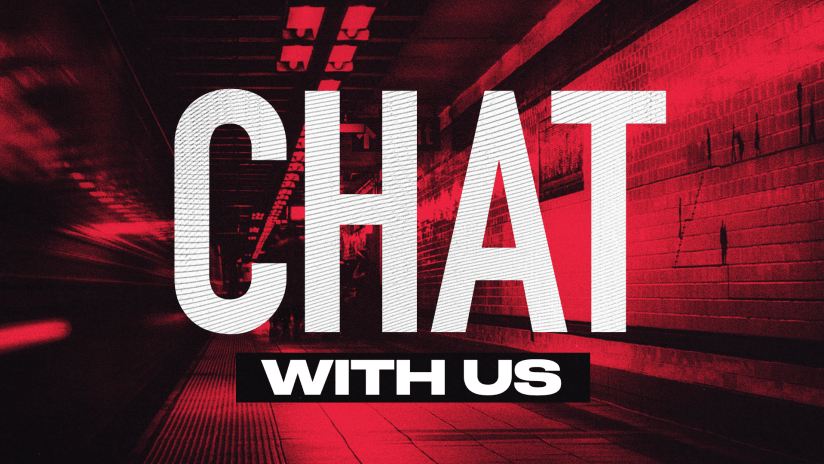Intro

On Sunday the Red Bulls face their new city-rivals for the third time in this MLS season. Since the two times in which Marsch’s side have emerged victorious, NYCFC have added talent to their team with one man being central – Andrea Pirlo. The World Cup and Champions League winner has already displayed his class in appearances for New York City FC in the handful of games he has featured so far. Due to his ability it will be of the upmost importance that Marsch sends his team out tomorrow with a strategy of curtailing the Italian to the best of their best abilities.
In their 3-2 loss to Montreal Impact, New York City FC lined up in a 4-2-3-1 formation which has become increasingly common following their system-switch after a poor start to life in MLS.
Stopping Pirlo
Over the past few seasons Pirlo has been a dominant figure in the Juventus midfield which has seen many trophies being delivered to Turin since his arrival from AC Milan. The deep-lying playmaker orchestrates the possession and sets the tempo for his side as a focal point as the ball is being circulated around the pitch.
However, his inevitable aging became much and much more showing towards the end of his last season in Turin and with it comes some issues which gives the Italian a rather easily-exploitable weakness. Due to his declined speed and agility, the Italian midfielder is much more susceptible to pressing than in past seasons and it showed in NYCFC’s 3-2 loss to the Impact as on a number of occasions he was caught out by a more energetic front line.
Considering the Italian’s importance to NYCFC building possession game and his inability to defend against pressure from the opposition he will be a prime target for Marsch’s forwards. If the Italian is allowed to play his natural game then he can easily dominate a match with his wealth of experience and excellent passing range, meaning that to press the ex-Juventus man would be not only beneficial for attacking purposes but crucial to maintain defensive stability too.
Should Pirlo’s influence be restricted by some effective defensive pressure, NYCFC may struggle in possession due to somewhat of a reliance on the Italian which is developing game-by-game.
To effectively press Pirlo, the Red Bulls must maintain defensive access at all times. If there is just a moment in which there is no pressure on Pirlo then he can unlock a defence, especially when Marsch’s team will be undoubtedly set out with the usual intentions to maintain a high defensive line and stay compact high up the field.
Exploiting Pirlo
In NYCFC’s clash against the Impact, there were a number of occasions where the away side regained the ball high up in the New York City half at the expense of Pirlo. Whether it be due to his aging body or that the Italian simply hasn’t got into match fitness yet, he struggled against the intensity of the Montreal forwards.

This factor could be key in the attacking strategy of the Red Bulls. Regardless of the opposition, Marsch’s side look to regain the ball high upfield in their positive game strategy which has proven to be impressively effective. Should they target Pirlo they will not only be under less threat without the ball but could create a number of threatening situations by winning the ball in the New York City half through the likes of Lloyd Sam and new signing Shaun Wright-Phillips.

Potential defensive issues could be caused by Pirlo’s age too. Once the ball moved past him against the Impact he often struggled to recover his position as the attackers were simply too fast for him. This should be of no issue for the Red Bulls, whose front line consists of the likes of Sam and Wright-Phillips, are one of the fastest attacks in the league. The shot from the Montreal match below exemplifies this – Pirlo was bypassed by a good pass and he failed to recover his position in time as Romero played a Pirlo-esque pass to Piatti who finished well with a lob over the stranded Saunders.
Defensive Flexibility
New York City FC have shown good defensive flexibility in their versatile 4-2-3-1 shape. When pressing high up field, they often switch to a 4-4-2 with Grabavoy moving up alongside David Villa. The shape allows them to form a relatively effective press as the front two strikers block any passes from the centre-backs into midfield whilst situationally they’re supported by wingers Calle and McNamara.
NYCFC’s pressing against Montreal however caused themselves more issues than the opposition as the first two goals came from long balls. Immediately there is an issue in that the forward actually receives the ball instead of it being intercepted by the defender but there was a considerable issue for NYCFC’s vertical compactness which at times was at very poor levels. Without vertical compactness it is much more difficult to defend against these long balls as the defence has much less support from their teammates in midfield which in turn provides the attackers with more time to control the ball which, although it wasn’t exactly the case with the two goals, happened on a frequent basis throughout the game. One could argue that the issue is a lack of pace amongst the centre-backs as both times they were caught lagging behind first Oduro and then Piatti however regardless the pass should generally be intercepted before the forward has chance to get on the end of it.
When the opposition have the ball in a more advanced position however, NYCFC tend to drop deeper in a 4-1-4-1 block which possesses more defensive stability and security with the covering defensive midfielder. As opposed to the initial 4-4-2 shape, the extra midfielder allows for (usually) a greater defensive solidarity which is key to overall defensive stability. The centre is the most important area on the pitch as it possesses the most attacking value, allowing a player to access most other areas on the pitch whilst giving them 360’ of options as opposed to just 180’. If a defending team controls the centre then they can force the opposition towards the wing which is of the least attacking value.
“The touchline is the best defender”
- Josep Guardiola
This is a common defensive strategy of some of the best defensive teams such as Borussia Monchengladbach and Atletico Madrid. In particular last season, when Gladbach beat Bayern 2-0 at the Allianz Lucien Favre’s team were excellent at controlling the middle of the pitch which forced Bayern into making many inefficient crosses.

(caption – An image from my analysis of the Bayern – Gladbach match on Spielverlagerung).
One of the key things to look forward to the 3rd Hudson River Derby is the battle between the Red Bulls’ energy and pace against Pirlo and what was a lagging defensive line against the Impact. After seeing the success of Piatti and Oduro as well as the final goal on the break, the RBNY forwards will be looking to make use of their pace – something which they have in abundance. The effect of Pirlo could potentially be key in the result of the game both in that his passing could win the game for NYCFC or that his growing issues could be exposed by the Red Bulls. Should Jesse Marsch and his team stick to the strategy which they have deployed all season, I’m backing the latter.




